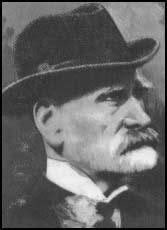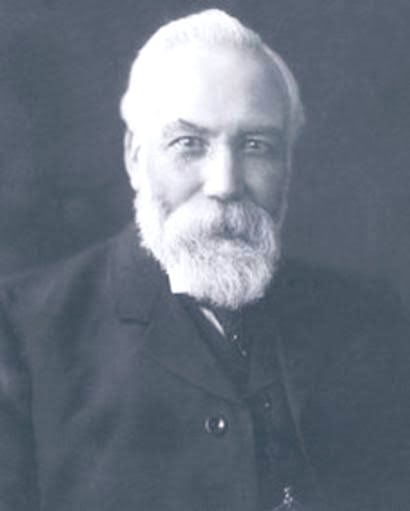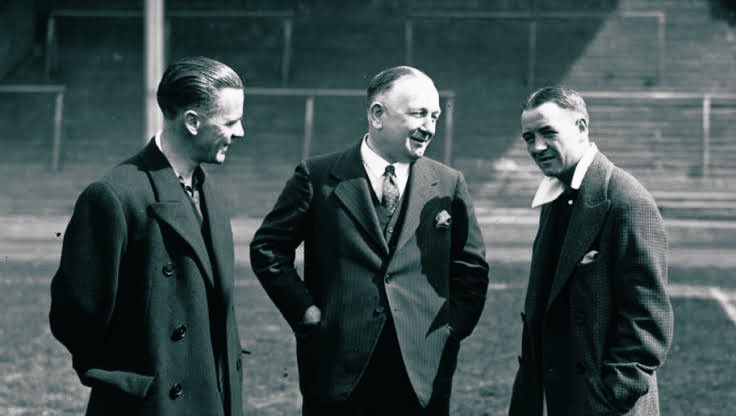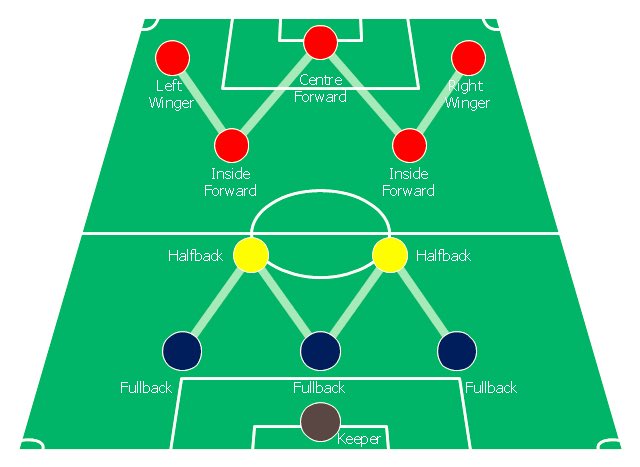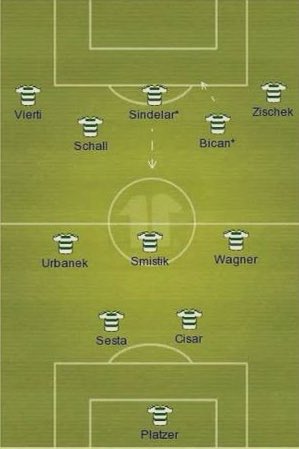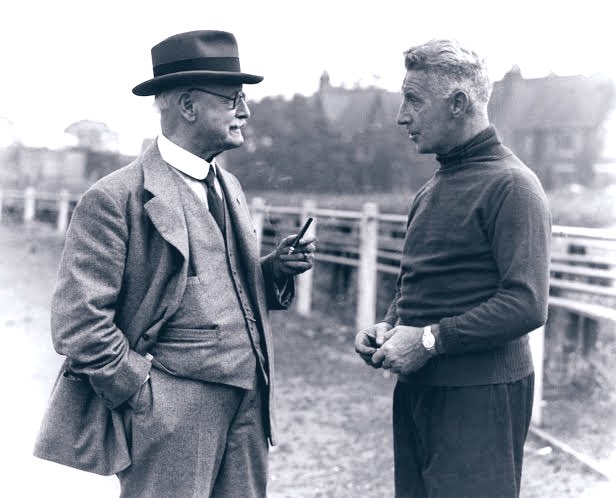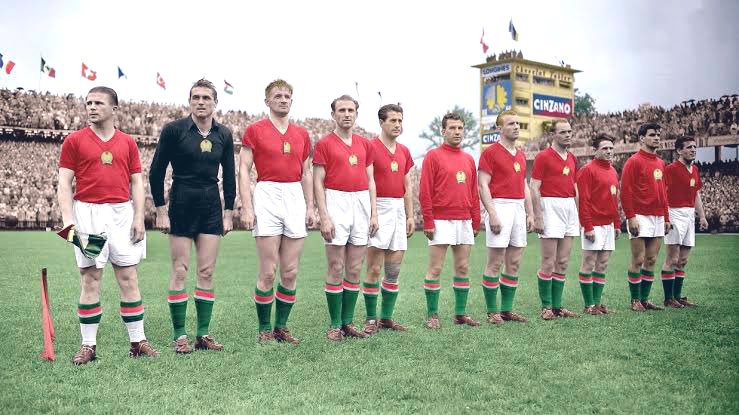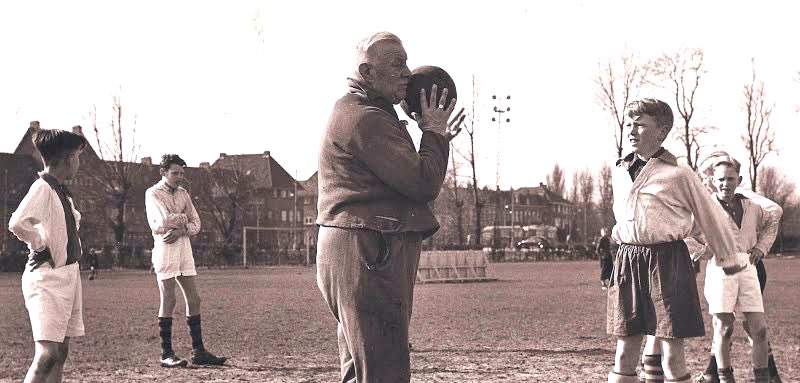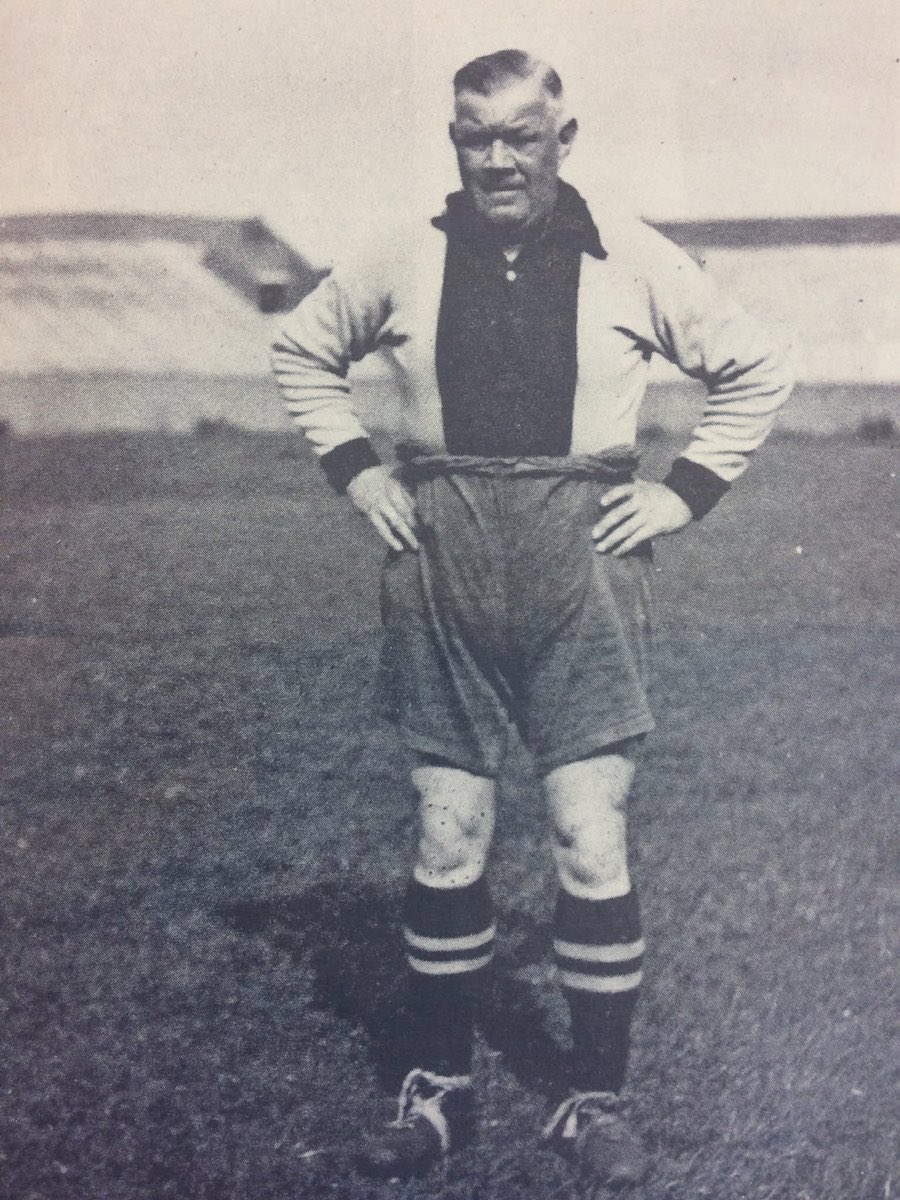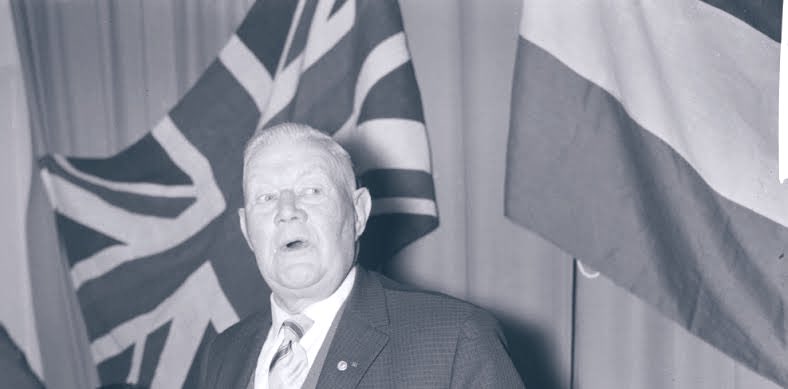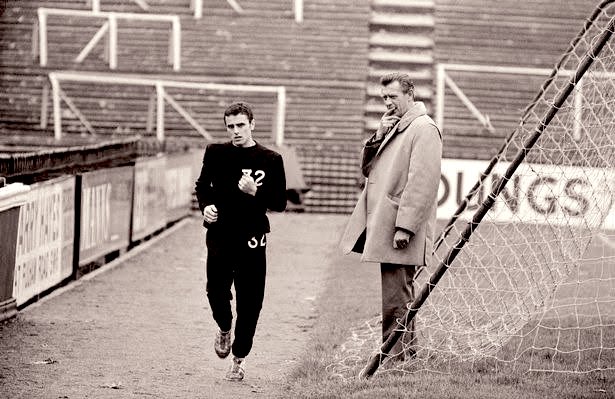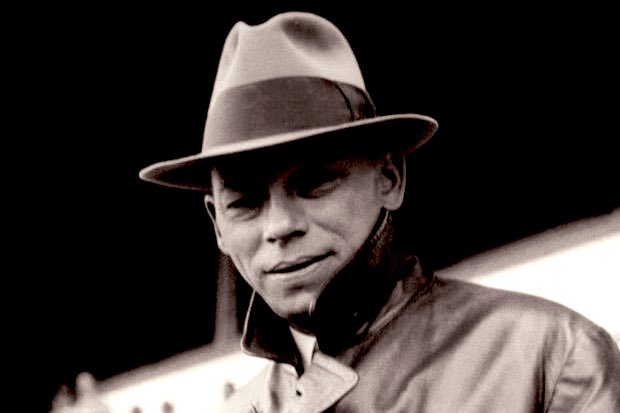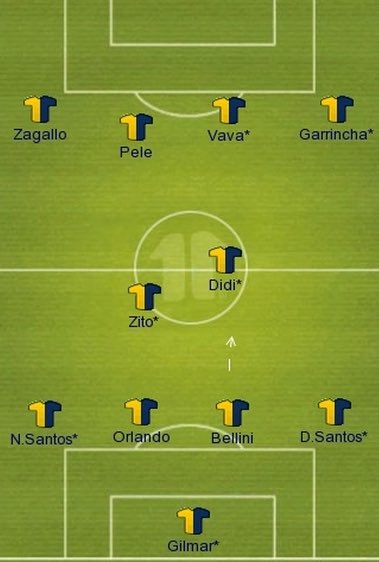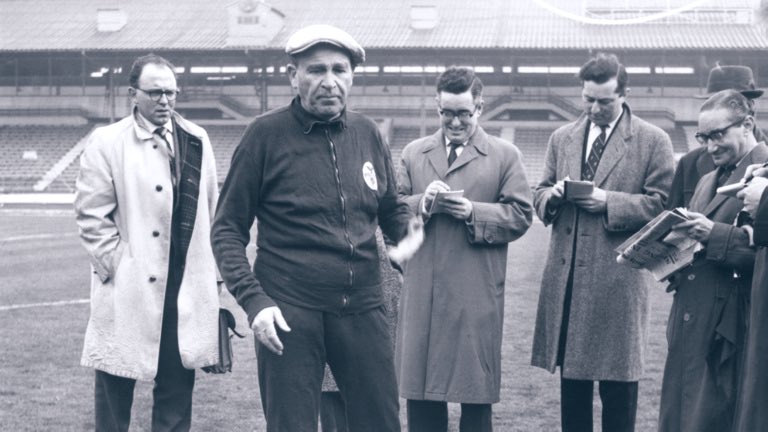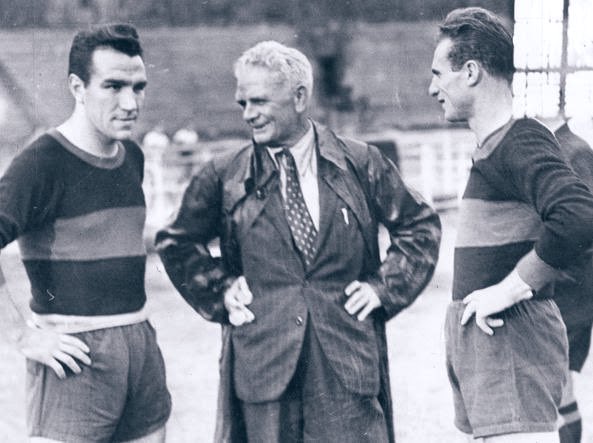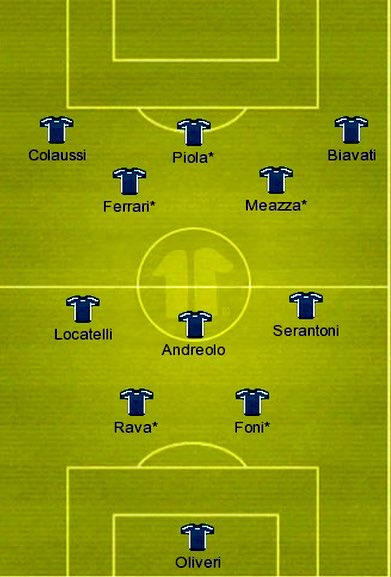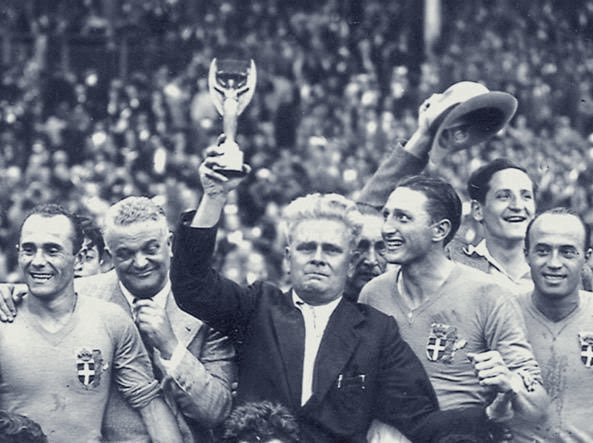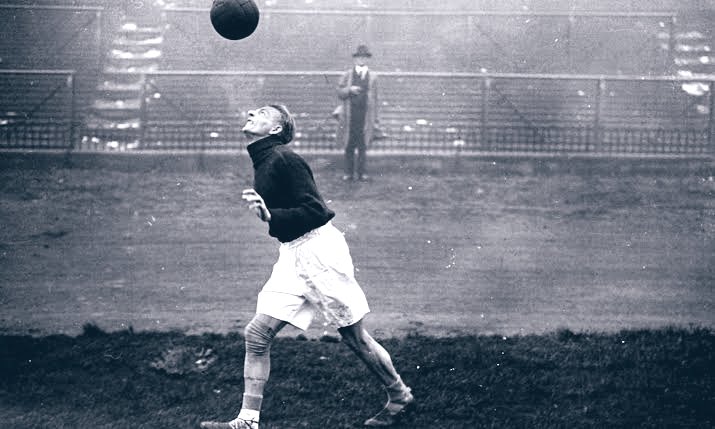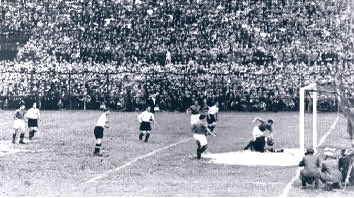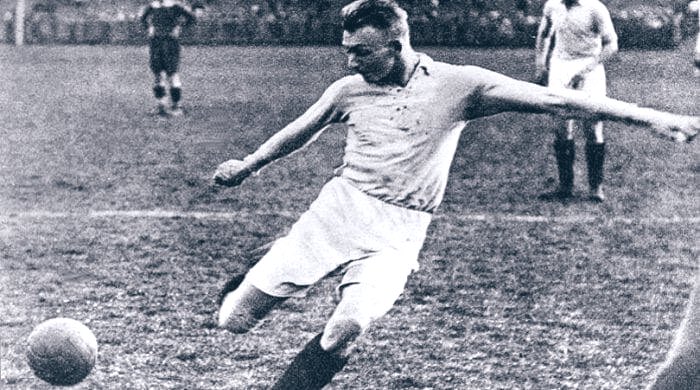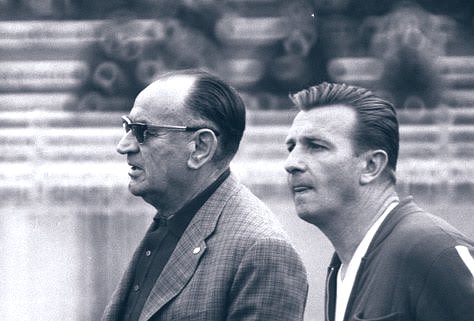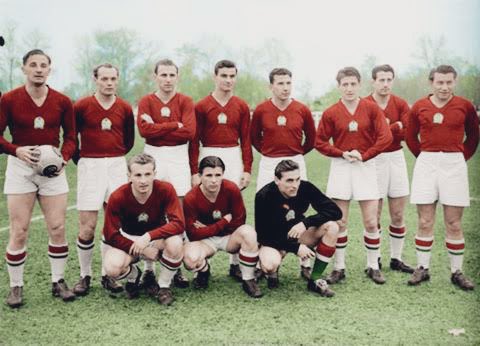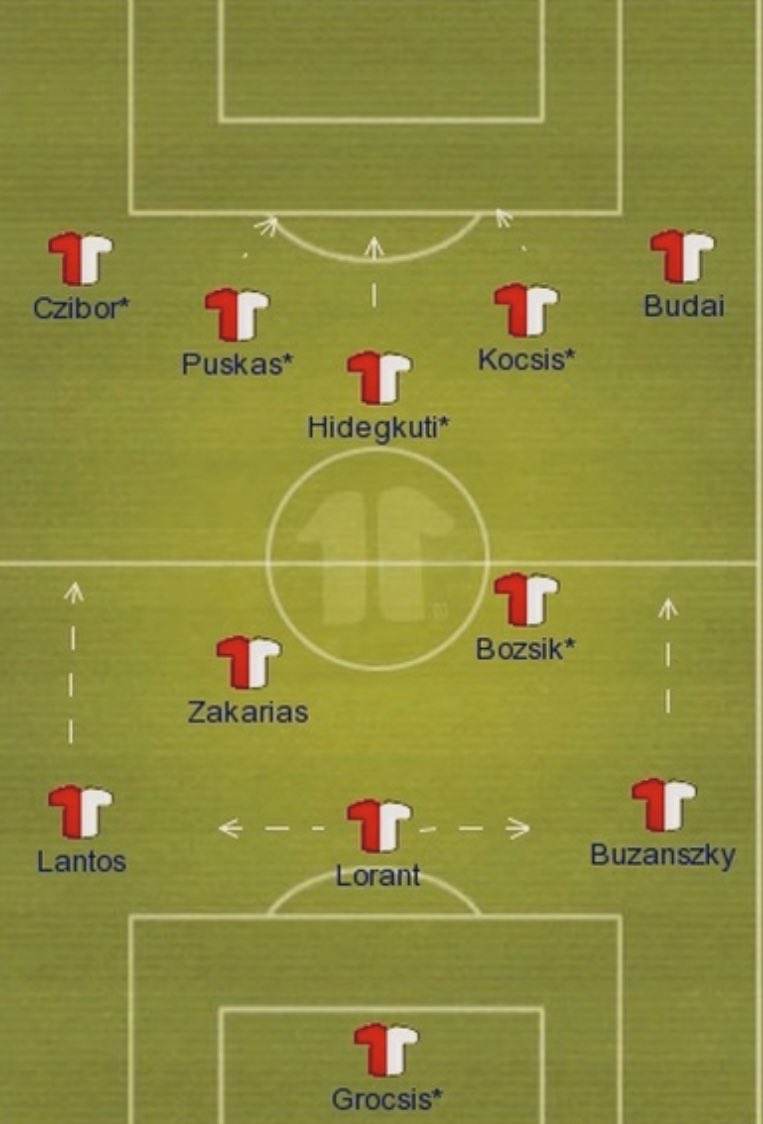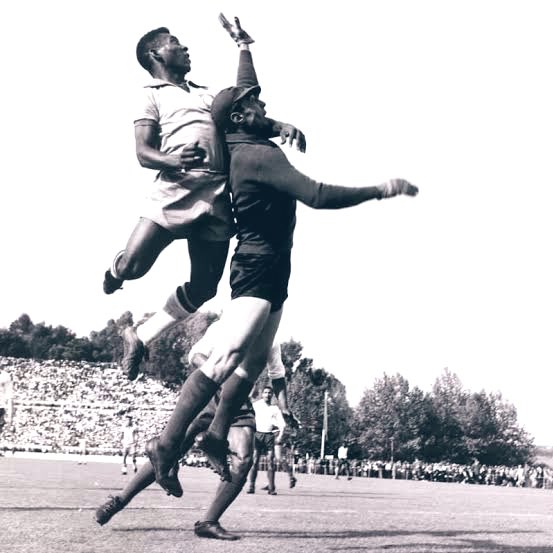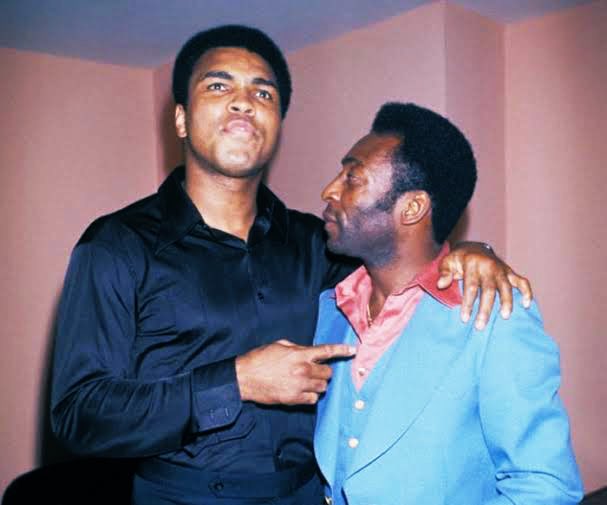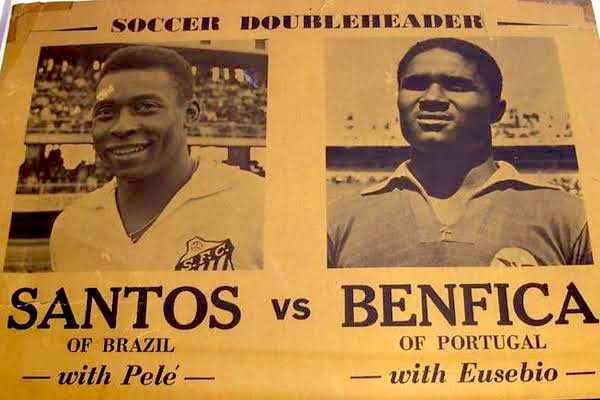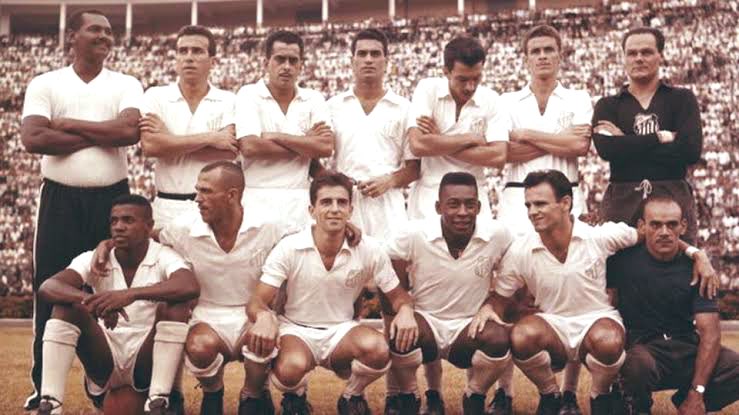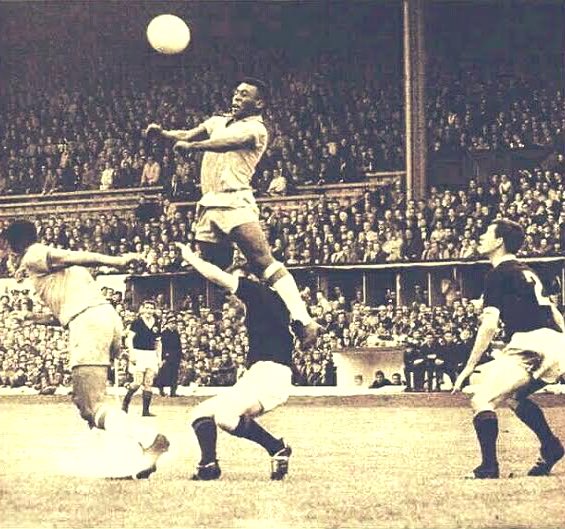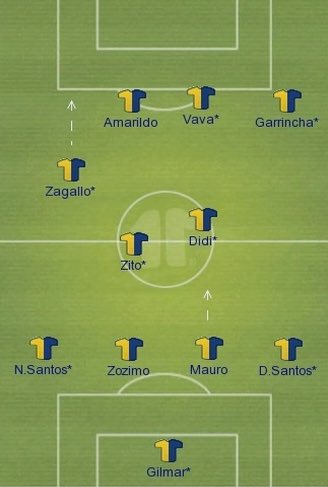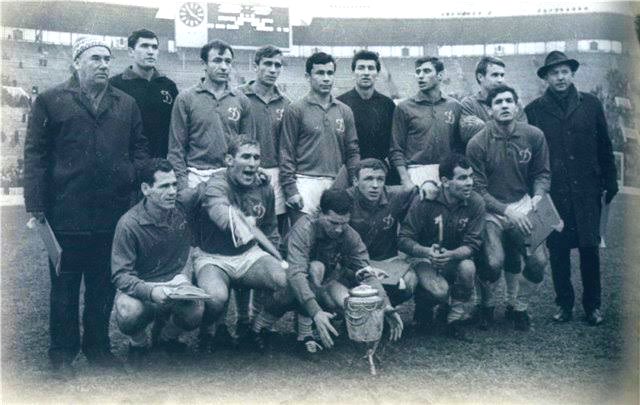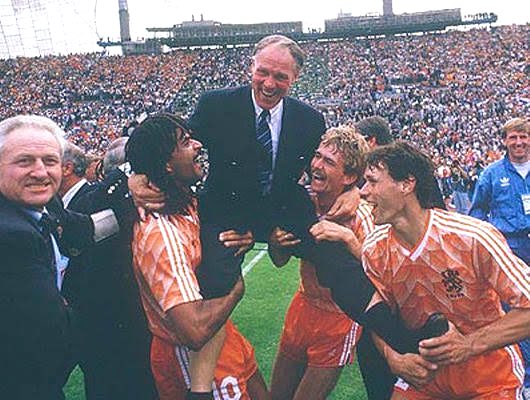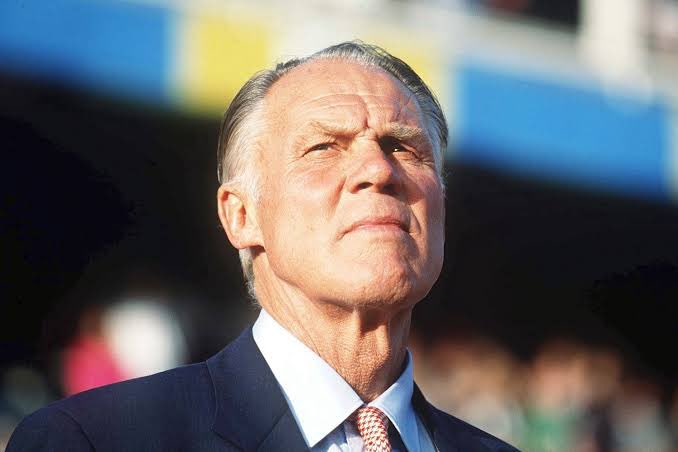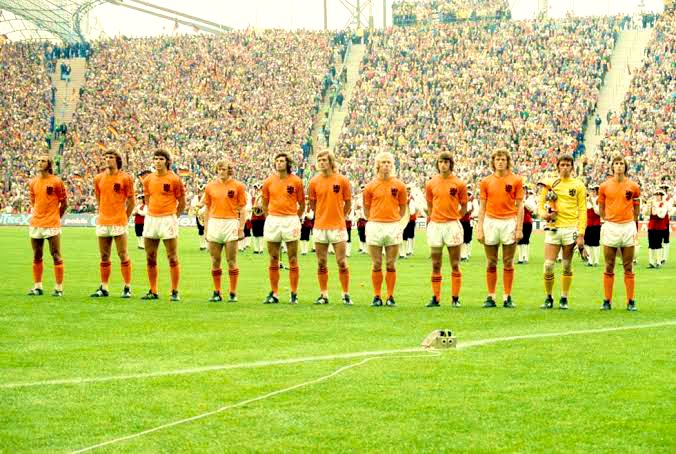THREAD:
15 of the most influential figures in footballing history
15 of the most influential figures in footballing history
This thread is going to explore the stories of the forgotten men that forged modern football as we know it today.
EBENEZER COBB MORLEY
Perhaps the most obvious name on the list, Ebenezer Cobb Morley’s influence upon our game is as profound as any. Born in 1831, Morley was a solicitor and formed Barnes Club, a founding member of the FA.
Perhaps the most obvious name on the list, Ebenezer Cobb Morley’s influence upon our game is as profound as any. Born in 1831, Morley was a solicitor and formed Barnes Club, a founding member of the FA.
It was Morley who was the pivotal figure in founding the FA in 1863, football’s first ever governing body.
It was Morley’s job to write the rules and codifying for football. Over 150 years later and the basic principles by which the game is played are still the same.
It was Morley’s job to write the rules and codifying for football. Over 150 years later and the basic principles by which the game is played are still the same.
WILLIAM MCGREGOR & CHARLES W. ALCOCK
McGregor and Alcock created the first league and first cup competitions in the history of our game.
McGregor and Alcock created the first league and first cup competitions in the history of our game.
It was McGregor who talked to England’s clubs and created a Football League, which started in 1888.
Alcock arranged the game between England & Scotland in 1870, the first ever international match. He also created the FA Cup, the first ever cup competition.
Alcock arranged the game between England & Scotland in 1870, the first ever international match. He also created the FA Cup, the first ever cup competition.
CHARLES WILLIAM MILLER
Considered to be the father of Brazilian Football, he was a born in São Paulo to British parents & in 1884 he was sent back to England where he learned to play football.
When he returned to Brazil, Miller brought 2 footballs and a set of F.A Rules.
Considered to be the father of Brazilian Football, he was a born in São Paulo to British parents & in 1884 he was sent back to England where he learned to play football.
When he returned to Brazil, Miller brought 2 footballs and a set of F.A Rules.
Football would never be the same again.
Miller was instrumental in setting up the first Brazilian football team - São Paulo Athletic Club (SPAC) and the first ever Brazilian league - The Campeonato Paulista
Miller was instrumental in setting up the first Brazilian football team - São Paulo Athletic Club (SPAC) and the first ever Brazilian league - The Campeonato Paulista
HERBERT CHAPMAN
Chapman was one of the games great innovators & football managers in the modern sense. He full charge of the team, rather than letting board members pick. A believer in physical fitness – he encouraged strict training regimes and the use of physiotherapists.
Chapman was one of the games great innovators & football managers in the modern sense. He full charge of the team, rather than letting board members pick. A believer in physical fitness – he encouraged strict training regimes and the use of physiotherapists.
Chapman was a fan of the continental game, unlike many in Britain.
He advocated the use of floodlights as well as players using white footballs and numbered shirts. He had championed the idea of a European club competition some 20 years before it took place.
He advocated the use of floodlights as well as players using white footballs and numbered shirts. He had championed the idea of a European club competition some 20 years before it took place.
He is also credited with the most successful application of the W-M formation which was considered the best formation in Britain for the best part of half a century until 1953.
Chapman quickly became the blueprint of modern football management. Tactically versatile, a great innovator, thinker & a business man.
For many people, Herbert Chapman is the grandfather of modern football management.
Arsenal football club will forever be in his debt.
For many people, Herbert Chapman is the grandfather of modern football management.
Arsenal football club will forever be in his debt.
JIMMY HOGAN
James Hogan is arguably the single greatest pioneer of the game of football on the European Continent with an immeasurable influence in Austria, Hungary, Switzerland and Germany.
James Hogan is arguably the single greatest pioneer of the game of football on the European Continent with an immeasurable influence in Austria, Hungary, Switzerland and Germany.
At the age of 28, Hogan began his coaching career & by the age of 32 he was coaching at MTK Budapest in Hungary. A club many have not heard of which has however had arguably the single greatest influence on football as we know it today.
Hogan’s ideas emphasised greater ball control, demanded versatility and the ability to pass the ball on what he called "the carpet". These ideas were a forerunner and heavily influenced what would become known in the 1970s as ‘Total Football’ and were often dismissed in Britain.
Germany and Austria& #39;s coaches also learned a lot from Hogan& #39;s brand of quick, short, incisive passing football. Hogan formed a partnership with Hugo Meisl – coaching the legendary Austrian Wunderteam in the 1930’s.
The Danubian School of football, of which Hogan was a pioneer was a development on the 2-3-5 (Pyramid) formation. The default formation at the time. This time the centre forward would play a more withdrawn role. It reached its peak in the 1930’s with the great Austrian team.
After the famous match of the Century in 1953 between Hungary & England at Wembley, Sándor Barcs, the then president of the Hungarian Football Federation, said
“Jimmy Hogan taught us everything we know about football."
“Jimmy Hogan taught us everything we know about football."
Guatav Sebes, the Hungarian manager echoed this sentiment saying,
"We played football as Jimmy Hogan taught us. When our football history is told, his name should be written in gold letters".
"We played football as Jimmy Hogan taught us. When our football history is told, his name should be written in gold letters".
Uniquely Hogan heavily influenced 2 of the greatest national teams our sport has seen. His ideas both directly and indirectly influenced the entire footballing world, and still does today.
JACK REYNOLDS
The man who taught Ajax Total Football
When one traces the origin of the ‘Dutch Total Football’ its origins lie in both Hungary and Holland and the foundations were all laid by Englishmen. The second of these men was Jack Reynolds.
The man who taught Ajax Total Football
When one traces the origin of the ‘Dutch Total Football’ its origins lie in both Hungary and Holland and the foundations were all laid by Englishmen. The second of these men was Jack Reynolds.
Born a year before Jimmy Hogan, Reynolds started coaching at Ajax a year after Hogen joined MTK elsewhere on the continent.
When he arrived, Ajax were a small club in Amsterdam who had never won a trophy. When he left they’d won eight Dutch national championships and a KNVB Cup
When he arrived, Ajax were a small club in Amsterdam who had never won a trophy. When he left they’d won eight Dutch national championships and a KNVB Cup
Reynolds methods of attacking football and focus on youth has become ingrained in the culture of Ajax. He introduced training methods that had not been used in Dutch football, with the emphasis not only on the technical side of the game but also on fitness.
Reynolds also implemented youth development, fielding youth teams at various different age-groups having them all train in the same way as the first team. He instilled in the club a belief in possession-based, quick-passing, attacking football.
A certain Rinus Michels played under Reynolds for just a single season, in 1946/47, before Reynolds retired. But his influence upon the man who is credited as the pioneer of ‘Total Football’ can’t be understated.
Years later, another English man, Vic Buckingham would take the job at Ajax, he too placed extreme emphasis on possession based football and in 1964 would give a boy called Johan Cruyff his professional debut.
He later took over at Barça and transformed the Catalan outfit, his predecessor was none other than Rinus Michels.
While at Fulham, Buckingham also coached a young English man by the name of Bobby Robson, who in turn took José Mourinho under his tutelage at Porto & Barcelona.
While at Fulham, Buckingham also coached a young English man by the name of Bobby Robson, who in turn took José Mourinho under his tutelage at Porto & Barcelona.
IZIDOR KÜRSCHNER
Kürschner commenced his coaching career in 1918 with MTK in Budapest taking over from the previous coach Jimmy Hogan. And by the middle of the 1930’s he decided to take the job at Brazilian side Flamengo.
Kürschner commenced his coaching career in 1918 with MTK in Budapest taking over from the previous coach Jimmy Hogan. And by the middle of the 1930’s he decided to take the job at Brazilian side Flamengo.
Kürschner& #39;s appearance in Brazil brought with it a push of footballing innovation & helped them later establish as a giant of world football. He would share his tactical blueprint, the W-M formation which had been in used in England & parts of Europe since the 1920s.
Flamengo’s assistant manager Flavio Costa, in time would tweak it slightly to what he called ‘O Diagonal’ which would be developed further to become what was known as the 4-2-4. The system in which Brazil achieved so much International success with.
Kürschner promoted a more controlled, defensive style in Brazil, introducing things like training without ball, Krüschner in short familiarized Brazilian coaches with European football and training methodology.
He won the a league title in Germany with Nurnberg & 7 league titles with Grasshopper in Switzerland. And joined up with Jimmy Hogan & Teddy Duckworth to lead Switzerland to the 1924 Olympic Final. The best result in the countries history.
VITTORIO POZZO
Regarded as one of the greatest managers of all time & the first person to guide a national team to two World Cups as a coach, he led the Italy to victory in the 1934 & 1938 FIFA World Cups.
Regarded as one of the greatest managers of all time & the first person to guide a national team to two World Cups as a coach, he led the Italy to victory in the 1934 & 1938 FIFA World Cups.
He is the creator of the Metodo formation. In which he strayed from the Danubian School of thought in Eastern Europe & the more rigid WM in Britain.
By pulling 2 of the forwards players in front of the midfield he created the 2-3-2-3 formation, from the original 2-3-5 Pyramid.
By pulling 2 of the forwards players in front of the midfield he created the 2-3-2-3 formation, from the original 2-3-5 Pyramid.
The system was defensively much stronger and allowed for counter attacking football.
The Italian was also a pioneer of pre tournament training camps.
The Italian was also a pioneer of pre tournament training camps.
His impact can still be seen in football today as it’s been argued that Pep Guardiola used a modified version of his system while manager of Bayern Munich.
MATTHIAS SINDELAR
The man twice the victim of facism.
Known as The Mozart of Football’ -
The Austrian forward was the finest player of his generation, as nicknamed ‘the Paper-man’ due to his slight build.
The man twice the victim of facism.
Known as The Mozart of Football’ -
The Austrian forward was the finest player of his generation, as nicknamed ‘the Paper-man’ due to his slight build.
Matthias Sindelar’s technique made him the best player on the planet at a time where footballers focused on physique and strength. He paved the way for a new mould of footballer & deserves huge credit for development of the number 10 role, playing as a withdrawn forward/false 9.
He was the talk of the town in Vienna where people would flood coffee-houses to discuss the great man. His graceful ability, so easy on the eye had intellectuals discussing him like they would politics or art & literature.
It was Sindelar’s performances for the Austrian Wunderteam that cemented his status as one of the games’ greatest.
In 1934 they went as favourites, to the World Cup, held in fascist Italy.
In 1934 they went as favourites, to the World Cup, held in fascist Italy.
Mussolini hand-picked the referees for every game the Italians played. Dining with Swedish referee Ivan Ekling the night before Italy’s semi final with Austria. Perhaps it’s no suprise then, that Italy’s goal came after pushing the Austrian goalkeeper over the line.
Or that Sindelar was kicked from pillar to post without as much as a second glance from the Swede.
To describe the referring performance as a disgrace would be an understatement. Austria would return home having finished in 4th.
To describe the referring performance as a disgrace would be an understatement. Austria would return home having finished in 4th.
By 1938 the Nazis annexed Austria - the Anschluss. The Austrian team was to be disbanded and reformed into a united German team
But they were to play one last match vs Germany to celebrate this unification. Sindelar hated the Anschluss and had been openly critical of it.
But they were to play one last match vs Germany to celebrate this unification. Sindelar hated the Anschluss and had been openly critical of it.
As expected, Sindelar scored.
But it’s what he did next that will be remembered throughout history. After Austria had made it 2-0 he ran over to the box where the Nazi officers where, and celebrated uncontrollably.
But it’s what he did next that will be remembered throughout history. After Austria had made it 2-0 he ran over to the box where the Nazi officers where, and celebrated uncontrollably.
The Nazis would dissolved professional sports & disbanded teams that had “Jewish influence.” . Sindelar refused to play for Germany or join the Nazi Party.
In January 1939 he was found dead, alongside his girlfriend in their apartment under circumstances that remain a mystery.
In January 1939 he was found dead, alongside his girlfriend in their apartment under circumstances that remain a mystery.
MÁRTON BUKOVI
The Hungarian was a brilliant tactical mind that played a major role in the great Hungarian team of the 1950’s.
Together with Béla Guttmann and Gusztáv Sebes, he was part of a trio of innovative Hungarian coaches who pioneered tactical progression.
The Hungarian was a brilliant tactical mind that played a major role in the great Hungarian team of the 1950’s.
Together with Béla Guttmann and Gusztáv Sebes, he was part of a trio of innovative Hungarian coaches who pioneered tactical progression.
Bukovi thought about he he could evolve the W-M. His solution, inverting the W. He’d discovered what resembles an M-M. Similar to a 4-2-4. His centre forward would drop deep into midfield, more than it had every before. While his pushed up wingers still created that front 4.
In 1946, while at Dinamo Zagreb, in a game that would decide the league title, Bukovi put his theory to the test. And it worked.
He would then take this same system to MTK for the next 7 years. Working with Hungarian Internationals Palotás & Hidegkuti. And by the early 1950’s the Hungarian National Team were using it, under Gustav Sebes, becoming the greatest national side in history.
Hungary would go 31 games unbeaten & lose just 1 of the next 50 games. Unfortunately it would be the 1954 World Cup final. Over 6 years, they had a 91% win rate, 4 years and 1 month unbeaten, scored 269 goals averaging 5.38 per game whilst recording the highest ever Elo rating.
This tactical innovation came to fruition as England hosted Hungary at Wembley. An English side that was unbeaten at home in their entire history. Hungary, led by Puskas, and with Hidegkuti causing havoc shocked the footballing world. And destroyed them 6-3.
What we call the false 9, has been tried before, G.O Smith played the role as far back as the late 1800’s for Corinthians. Sindelar effectively played as a false 9 in the great Austrian Wunderteam which was cruelly cut shirt by the war, and there are others.
But this time, this was the first time the false nine showed its plausibility, maybe this time it would stick. All thanks to the great Bukovi.
PELÉ
There is a reason why Pelé is still the reference of quality. Over 60 years on, he is the yardstick to which all others are compared. Football can in itself be viewed from the lens of before and after Pelé.
There is a reason why Pelé is still the reference of quality. Over 60 years on, he is the yardstick to which all others are compared. Football can in itself be viewed from the lens of before and after Pelé.
Many great players have been largely forgotton, lost in history. But not him.
Pelé wasn’t footballs first great footballer. Generations before him saw the likes of Sindelar, Meazza, Stanley Matthews, Alfredo Di Stefano and more. But Pelé was footballers first global superstar.
Pelé wasn’t footballs first great footballer. Generations before him saw the likes of Sindelar, Meazza, Stanley Matthews, Alfredo Di Stefano and more. But Pelé was footballers first global superstar.
He lit up the world at 17, scoring 6 goals in the World Cup quarters, semi’s & Final and by 22 he had conquered the world twice over at club level, notably embarrassing European Champions, Eusebio’s great Benfica 5-2 in Lisbon.
In Nigeria they held a 48 hour ceasefire during a civil war to watch him play. He toured the world with Santos, stadiums filled to the brim, to get a glance of the Brazilians magic feet.
Pelé dominated football alone for well over a decade. A footballing CV with no weakness, a skillet with no fault. The combination of a genius footballing gift & a once in a lifetime athlete.
In the USA they ran tests on him.
He had a playing heart rate of 56 beats per minute & a peripheral vision 30% greater than the average person.
His vertical jump was measured to be higher than Michael Jordan’s. And he ran the 100m in 11 seconds.
He had a playing heart rate of 56 beats per minute & a peripheral vision 30% greater than the average person.
His vertical jump was measured to be higher than Michael Jordan’s. And he ran the 100m in 11 seconds.
Cruyff famously said he was the only footballer “surpass the boundaries of logic”
Bobby Charlton thought football was invented for him.
However Puskas thought Di Stefano was the greatest ever. He stated he did not class Pelé as a footballer, because he was ‘above that’.
Bobby Charlton thought football was invented for him.
However Puskas thought Di Stefano was the greatest ever. He stated he did not class Pelé as a footballer, because he was ‘above that’.
VIKTOR MASLOV
There are people whose ideas shifted footballing thinking, whereby the game just cannot be the same after them. One such man is Viktor Maslov. But there was a time in history where many would have laughed at the idea.
There are people whose ideas shifted footballing thinking, whereby the game just cannot be the same after them. One such man is Viktor Maslov. But there was a time in history where many would have laughed at the idea.
After 6 years in management things weren’t exactly going to plan.
Everything changed in in 1957 when he was re hired by Torpedo Moscow, after being fired by them 9 years earlier. 1 league title and 2 domestic cups later Dynamo Kyiv sounded their interest & Maslov couldn’t refuse
Everything changed in in 1957 when he was re hired by Torpedo Moscow, after being fired by them 9 years earlier. 1 league title and 2 domestic cups later Dynamo Kyiv sounded their interest & Maslov couldn’t refuse
In the 50 years previous, football had progressed from the 2-3-5 Pyramid, seen the Austrians & Italians tactical tweaks, the W-M developing further into Hungaries MM (3-2-1-4) & onto Brazil’s successful 4-2-4.
Brazil had further tweaked this by 1962, pulling Zagallo, normally a wide forward back central into midfield resembling close to what we would know as a 433.
But it seemed as though tactical modernisation may have stalled.
That was until Maslov went one winger further. He took the famed 4-2-4 and dragged both wide men back. Creating the 4-4-2.
That was until Maslov went one winger further. He took the famed 4-2-4 and dragged both wide men back. Creating the 4-4-2.
And Maslov didn’t just stop there. The main feature of his teams, and what would change football going forward was what his teams did out of possession. Pressing. Limiting opposition space and as high up the pitch as possible.
This would be the first time we’d really seen it done properly.
Maslov was successful in creating a system whereby not only was it effective in the press. But it also allowed an advanced playmaker to thrive. As one of his central midfielders would push forward in possession.
Maslov was successful in creating a system whereby not only was it effective in the press. But it also allowed an advanced playmaker to thrive. As one of his central midfielders would push forward in possession.
These modifications as well as heavy focus on fitness, nutrition and diet would have a huge impact, especially on Lobanovskyi who would take this step further years later. Whilst also smoothing the way for Michels, Cruyff and the future of football.
RINUS MICHELS
He took his nation to a World Cup final, won them their first ever trophy, the 1988 European Championship. He won 4 League titles in Holland & 1 in Spain. But Michels legacy is far far greater than that.
He took his nation to a World Cup final, won them their first ever trophy, the 1988 European Championship. He won 4 League titles in Holland & 1 in Spain. But Michels legacy is far far greater than that.
The true foundations of total football can be traced back at Ajax to the days of Jack Reynolds.
And common themes than run through it such as positional flexibility and fluidity can be traced back through the great Hungarian sides, the Austrian Wunderteam, to Jimmy Hogan.
And common themes than run through it such as positional flexibility and fluidity can be traced back through the great Hungarian sides, the Austrian Wunderteam, to Jimmy Hogan.
And I suspect further back than that. (That’s something for another day)
This dynamism, versatility & quick passing football amongst other things paved the way for Michels.
But a new theory had been slowly taking shape over the years, causing a major shift in footballing thinking. And that thing was ‘space’.
But a new theory had been slowly taking shape over the years, causing a major shift in footballing thinking. And that thing was ‘space’.

 Read on Twitter
Read on Twitter